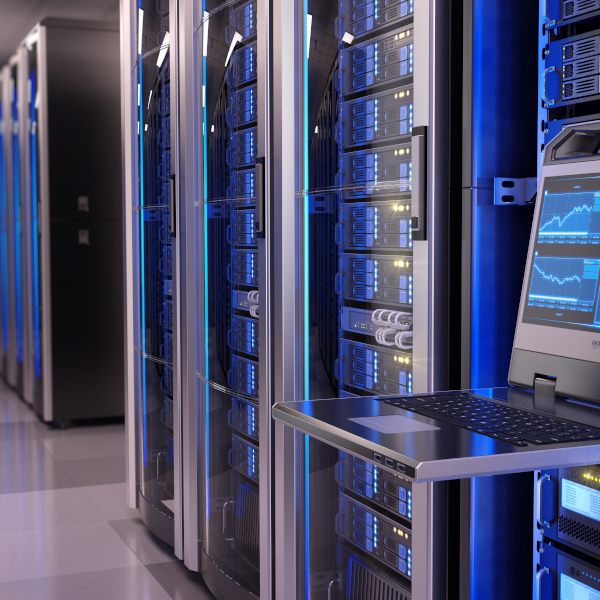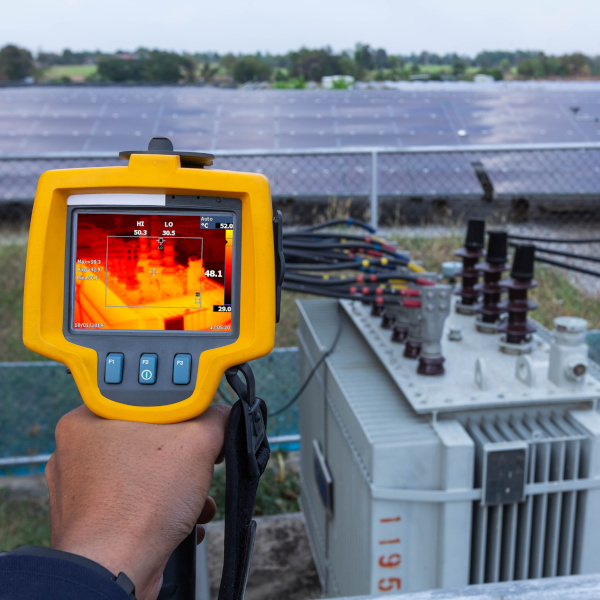Maintenance & prevention is always a business decision!
In trade, administration or industry, one will always have to ask oneself whether it makes sense to have an electrical system serviced regularly.
As a rule, this is always a decision that must also be made with costs in mind. But what are the costs that ultimately come into consideration?
Decision-makers generally do not make it easy for themselves to make a decision. Especially when it comes to preventing greater damage to production due to a possible breakdown of a machine or system. What would be the worst case scenario in such a case? Or rather, what would cause the cost factor to quickly jump to values that you don’t really focus on in advance?
This would definitely include production downtime, i.e. from waiting times for personnel and delays in the material flow to non-compliance with promised delivery dates. Also, in most cases, there is a risk that the defective equipment, due to lack of maintenance. Consequential damage can occur within the plant, the supply lines or to parts of the building. Such scenarios are not uncommon and, depending on the magnitude, make headlines in the media.
Data center
In the reports, it repeatedly comes to light that data centers, for example, are a critical point when considering consequential damage. Data has become an extremely important factor, it is essential and of the highest importance for every citizen, banks, industry, but also for governments and offices. Thus, it is an absolute necessity to protect this data and make it available to the user at any time.
Therefore, the focus for the construction of data centers was placed on points that make it possible to ensure a high level of security for the data and the users by using the existing infrastructure.
Figure 1: Without electricity, access to data has become almost impossible.
At their core, data centers simply put consist of premises that ensure the secure operation of the installed servers around the clock by ensuring the required room temperature and the availability of electrical power.
Thus, in addition to other important factors that affect the actual data, there are two crucial core points. However, these require special attention:
- Climate and ventilation
- Energy supply
What, however, connects these two core points with each other or, if applicable, where does a common point of intersection lie?
Figure 2: Server in a data center
First, let’s consider the topic of climate and ventilation. To ensure the required ambient temperature in the server room or other parts of the building, it is necessary to install appropriate cooling units. As well as to bring the obtained cold air to the places where it is needed. However, we do not want to talk about air shafts, intermediate floors or other air-conditioning equipment, but we would like to draw attention to the electrical part of these installations.
According to the current state of the art, power electronics components are used there to control and maintain the process parameters. Thus, frequency converters, actuators and high-speed compressors with magnetic bearing technology are installed to ensure safe operation. On the other hand, however, they unfortunately reduce the voltage quality due to principle-related feedback effects on the power grid.
This leads to a problem that is already known to us from the point of view of power quality, which we have described, for example, in our other blog post on mains feedback. The network feedback effects of the air conditioning technology on the supply network should be kept as low as possible. Likewise, the thermal overload of the supply infrastructure due to harmonics should not be neglected.
Energy supply
Figure 3: Thermography of the power supply components is a suitable measure here to be able to detect increased temperatures at an early stage and thus prevent overheating.
Another important point is the power supply. This also includes the continuous power supply in the data center in the event of an unintentional blackout on the side from the power generator.
This does not always have to be a long-term disruption, it can also be short interruptions. However, these are not negligible for the installed servers, because they may be heading for a shutdown or data loss.
To prevent this it is possible to install a system of “Uninterruptible Power Supply” (UPS). With a UPS it is possible to supply sensitive consumers such as data servers with constant energy. With built-in energy storage in the UPS, it is therefore possible to bridge short-term interruptions in the power supply by the energy provider. Likewise, the UPS can supply the connected consumers with a stable mains voltage and mains frequency, independent of (short-term) events in the supply network.
All in all, this sounds very good and what is the problem? Why does the Ceno PQ still raise its finger of caution here?
Figure 4: Structure of a data center, almost everything today is directly or indirectly dependent on servers in data centers
Operational safety
Once again, it is the interaction of the UPS with the connected loads that makes the difference. In most cases, the load consists of countless servers that are connected to the output of the UPS as single-phase electronic loads. We already know about the problem that electronic loads, due to the internal power supply, can distort the load current and thus generate a spectrum of harmonics, see “The underestimated influences of electrical energy on the operating process!“.
The harmonic spectrum and the additional load from the neutral conductor, thus causes a technical challenge for some UPS systems. In certain cases, this can lead to a thermal overload or short-term shutdown of the UPS or other components. However, an uncontrolled shutdown of the power supply to the servers by the installed UPS is in no case desirable and must be prevented by specific measures.
The solution would be, for example, the connection of an active harmonic filter (AHF) at the output of the UPS. With the help of the AHF it is possible to reduce the load on harmonics and the load on the neutral conductor (load current balancing) for the UPS. With this combination it is definitely possible to increase the operational reliability and reduce the losses in the system.
After all that we have now considered, it is possible to build a high level of operational reliability with the installation and interaction of various electronic devices. But what happens if this balance gets out of whack or a technical defect causes the interaction to topple?
The only thing that can help here is preventive maintenance and prevention, as you know from personal experience with your own car. An AHF or a UPS are complex products of power electronics and must be subjected to regular maintenance in order to maintain the desired life cycle. Likewise, a power quality measurement should be performed at regular intervals to detect critical points in advance and, if necessary, take measures to ensure uninterrupted operation over 24-7.
What can happen if these specifications are not observed or not observed at all can be read over and over again from the various reports about causes of fires in data centers and industrial plants around the globe.
A fire with serious consequences is not uncommon and can sometimes be seen as the cause of a failure to carry out maintenance on the product or a lack of or failure to carefully examine the power quality in the power grid.
Figure 5: Fire in an industrial building
Those responsible for technology and the CEOs of the companies must act in good time and with foresight. Only by acting responsibly and monitoring the voltage quality accordingly can irregularities be detected in advance. Major damage and a prolonged operational downtime can thus be prevented.
We at Ceno PQ are familiar with problems of this kind and can support you with your individual power quality challenge. Please contact us, we will be happy to support you, both online and on site.
With Ceno …
… you can be sure that your network problems are a thing of the past.
…relaxed in the (electricity) grid








Leave a Reply
Want to join the discussion?Feel free to contribute!